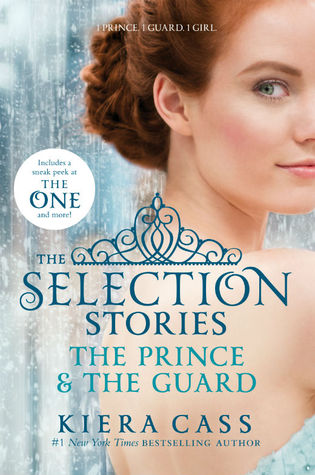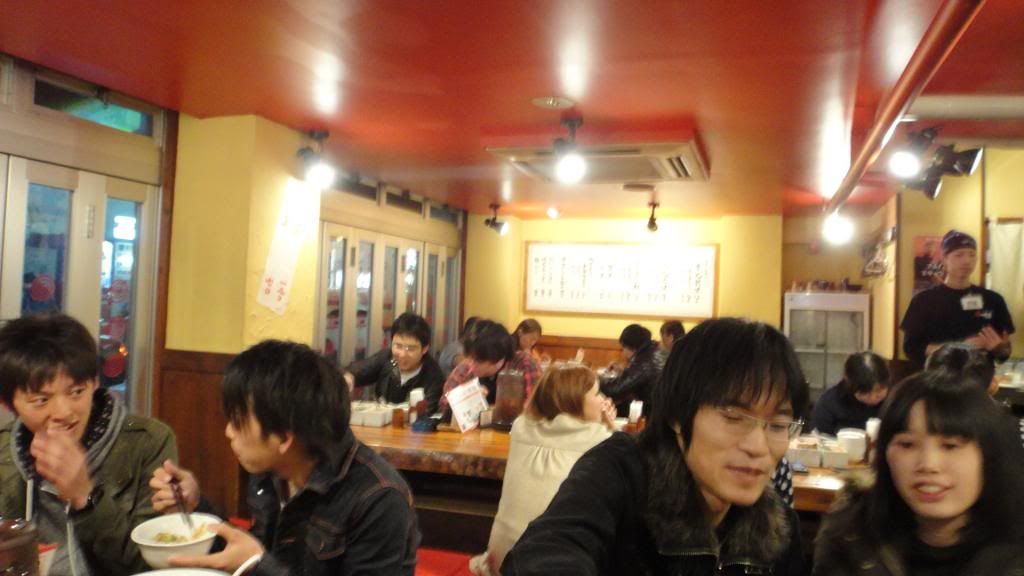A’s Top 5 Books of 2014 (So Far)
1. A Curse Dark As Gold, by Elizabeth C. Bunce
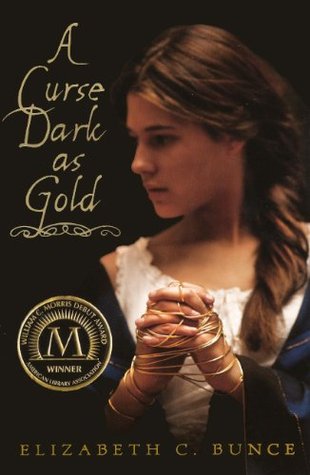
You may recognize this book as my Morris Award winner from reading bingo, and WOW, am I glad I picked this one. It was damn near perfection.
The book takes place in a setting much like that of England on the cusp of the industrial revolution, in a small town centered around a wool mill. Charlotte Miller has to take charge of the mill with her sister after their father’s death, and though she refuses to believe that it’s cursed, as people claim, bad luck is visited upon them again and again. Just when it appears that everything is going to fall apart, a man called Jack Spinner shows up, and offers to spin straw into gold thread for a small price. Starting to sound familiar yet? Every time bad luck threatens to shut the mill down, Jack Spinner reappears to save it, always with a different, strange price. But as the bad luck and bargaining continue, Charlotte will have to get to the bottom of the curse if she hopes to save the mill and the town along with it.
I just. It was SO good. The writing is exceptional, with fun period-appropriate spellings here and there. All the characters are fully realized, complicated people. The mystery surrounding the curse is genuinely mysterious, and kept me guessing at what was really going on with each new clue that surfaced. The atmosphere was pitch perfect, with the spookiness and suspense executed flawlessly. In fact, it ended up being a lot creepier than I would’ve expected from reading the blurb, and it really worked. I was completely engaged and engrossed—as Charlotte was making decisions and trying to save the mill, I found myself wondering at the strangeness of events along with her, or covering my eyes and howling nonoNO don’t do it!!!, or having some other completely crazy reaction. The only thing I was initially unsure about was the protagonist marrying the love interest not even halfway through the book, but I should never have worried—the romance lost none of its interest (in fact, I’d say it GAINED interest) and it had a huge emotional payoff. Not an approach to romance you see everyday, and it was pretty brilliant. SO GOOD.
Seriously, you should read this book.
2. The Tiffany Aching Quartet, by Terry Pratchett

Okay, I guess this is kind of cheating because it’s a series. But I couldn’t pick just one of the two I’ve read!!! These books take place within Terry Pratchett’s Discworld, but you don’t have to have read all, or any, of the Discworld books to understand these ones. They were actually my first trip into the world of Terry Pratchett, and I absolutely loved them.
Tiffany Aching is a young girl living in the Chalk, a region of fields and sheep, who finds out that she is a witch. In the first book, The Wee Free Men, Tiffany has to go to Fairyland to save her kidnapped baby brother, and in the second, she leaves the Chalk to study with another witch. Always with her, however, are the Nac Mac Feegle (also known as Wee Free Men), tiny Scottish-ish Pictsies who love drinking and fighting, and who never fail to show up and help the wee hag face whatever challenges come. I mean, they’re called Pictsies! That’s hilarious!!!
Terry Pratchett is a funny man, and his wit is on display in full force in these books. Reading them makes me laugh, but it also makes me feel like I’ve learned something about life and the universe. The books have an impressive depth and resonance that commingle with the humor, creating something that feels both meaningful and entertaining. These books are fantasy, but like all good fantasies, they are completely real in all the important things. They may be labeled as YA, but they’re ones that everyone should read. I can’t wait to read the second half of the quartet!
I effing love this play. I've seen a couple amateur productions of it before, but I’d never actually sat down and read it until this month. It's wonderful to watch and I can’t recommend that experience enough, but it’s also amazing how full the play is, how there was so much more I picked up on in the reading that flew right by me in the watching. Though I spent quite a while lingering over it, I suspect there is yet more that has gone over my head, and I hope to grasp it in future readings and viewings.
The play has two parallel storylines, one unfolding at an English country estate in the nineteenth century, and the other taking place at the same estate in the 1990s, with scenes switching back and forth between the two. The modern day story involves academics who are investigating or tangentially related to a mystery involving Lord Byron’s possible presence at the estate in, you guessed it, the timeline of the earlier storyline. While the academics debate the truth of what really happened all those years ago, we learn more about it through the nineteenth century storyline involving a young girl who is brilliant at mathematics, her tutor, and the rest of her family and the guests they host at the estate. The contrast between the conclusions the modern people draw about the earlier days and what we see actually happening in that time is completely absorbing, and two storylines’ convergence as the end of the play draws near is powerful.
It’s just…it’s perfection, and I don’t have any words to properly convey its brilliance. It’s full of scintillating wit and intelligence, and it perfectly captures the exhilaration of literary/academia nerding. It covers ideas of truth (both its objectivity and subjectivity), the effects of passing time, science, math, poetry, the nature of existence and the universe, lust, love… It’s laugh-out-loud funny, and joyful, and witty, and quirky (there are pet tortoises!), and very moving, and sad. I don’t know how all that can be contained in 97 pages, but Stoppard achieves it masterfully. Please read it. Please watch it. Experience it for yourself, since nothing I say here can do it justice.
4. The Encyclopedia of Early Earth, by Isabel Greenberg

I’ve already talked about this one recently here, so I’ll try not to repeat myself too much. I went into reading this graphic novel not really knowing what to expect, and ended up thoroughly enjoying it. It was easy to get caught up in the stories within stories narrative style, and the mix of old myths in new clothes and unfamiliar ones is addictive. Since it’s a story about storytelling, there are some funny meta moments, and the humor is a nice contrast to some of the intensity that myths can have—y’know, vengeful gods, murders, those kinda things. You can tell that the author just gets it, with regards to the nature of myth and legend. I hope there are more graphic novels about Early Earth to come in the future!
5. The Civil War in Color, by John C. Guntzelman

I’ve had my eye on this one since I first saw it on a Barnes and Noble Civil War 150th anniversary themed display table sometime last year. I recently checked it out from the library, and liked it enough that when I heard through the grapevine that it had made its way to the bargain books section of many B&Ns, I bought a copy for the low price of thirteen dollars. And well worth it, I say! The basic idea behind the book is to take images from the Civil War, the first conflict in US History that was widely photographed, and after much research about the appearances of the people involved, the popular clothing colors of the day, etc., colorize the photos in hopes of giving readers a new perspective on the war.
It is completely successful in that aim. I love black and white photography, but when I look at photos taken long ago, there is something undeniably historical about them. On the one hand I feel connected with the past by seeing actual images of the way things looked back then, but on the other it still feels distant in many ways. It was astonishing to me how the addition of color to the photos contained in this book makes them feel so much closer. It makes them seem more real, more alive, and more relatable. So many more details become noticeable in color (there are the original B&W versions included for some of the photos, for comparison purposes), and I found myself poring over every inch of each photograph, wondering about the lives of the people immortalized in them. (The similarities between the appearance of men from this era and modern hipsters are also surprising. Photoshop in a smartphone and some sort of organic craft beverage, and you could be at Coachella.) Lots of text to help elucidate what you’re looking at makes this an educational, eye-opening coffee table book. Check it out if you can.
*Honorable Mention* The Name of the Wind, by Patrick Rothfuss
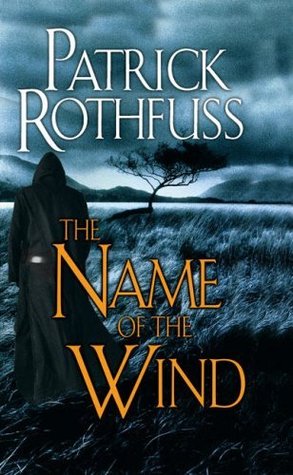
I finally got around to reading this much-loved epic fantasy novel, and really enjoyed it. Though I worried that the main character, Kvothe, was wandering into Mary Sue territory at times, he is a fascinating, resourceful dude and it is thoroughly awesome to live vicariously through his experiences. There were a few tricksy twists by the author that pleased me greatly, and a cast of well-developed characters that I can’t wait to visit again when I get my hands on book two. I liked the book’s unique take on magic and solid world-building. The way the story is structured, with an adult, fallen-from-grace Kvothe telling the story of his life up to that point, inevitably creates a sense of foreshadowing where you’re kept wondering how things went so wrong for a guy who from childhood seems to be heading in the direction of becoming an epic hero.
Overall I rated the book a 4 out of 5, since I try to be stingy with fives and reserve them for ones with that certain indescribable, jaw-dropping, knock-me-on-my-ass quality. For me it hovered between the two for most of its over-700 pages, but there were definitely a lot of full-on 5 moments, like when Kvothe plays for his pipes at the Eolian. That was probably my favorite scene in the entire book—the way the words make you hear music is pure magic. (If you haven’t read the book that probably sounds like gibberish, but when you read it will make sense. Promise!)
S’s Top 5 Books of 2014 (So Far)
1. Where’d You Go, Bernadette, by Maria Semple

Bea, a young teenager, is trying to piece together what happened before her mother, Bernadette, disappeared on the eve of a family trip to Antarctica. With notes between members of the PTA at Bea’s school, memos between Bernadette and her remote personal assistant, magazine clippings about her Bernadette’s illustrious career as an architect before Bea’s birth, Bea tells a gripping and often hilarious account of her mother’s eccentricity and the absurdity of the school parent community.
I knew I loved Bernadette as I was reading it in January, but I couldn’t put my feelings into words before I read another book in March that seemed to be approaching similar themes in a far less appealing way.
Basically the success of this rests in the decision of the author, Maria Semple, to structure the book as a project Bea is doing to find her mother, both in the “getting to know who she really is” sense, and in the action later in the story. First, Bea is a charming narrator. She’s a cusp-of-high-school girl who is mature and sheltered, allowing her to make observations on the people who surround her with well-considered judgments but some level of innocent miscalculation. In a story that uses petty PTA mom gossip, Bea’s voice serves as a palate cleanser and as reality check.
Next, the double sense of finding Bernadette is doubly interesting. Exploring the paper trail of what seems to be a crazy Bernadette is a solid enough basis for a funny satire about stay-at-home mothers. Having Bea propose to travel to Antarctica to try to find a missing mother follows the absurdity of the earlier part of the novel, but adds an extremely somber element of a girl struggling to find peace with grief. And once the grief is there, it’s easy to see the darker side to Bernadette’s problems in the first half of the book, even as it’s impossible to keep from laughing at some of them.
I don’t want to limit my praise to these elements. Bernadette herself is a great character, the writing style is so controlled and yet seemingly effortless, the send-up of tech culture in Seattle is funny too.
2. The Beginning of Everything, by Robyn Schneider

Witty teen boy narrators idolizing troubled girls who wear cool clothes and plan cooler pranks seem to be a mainstay in young adult literature these days (at least on this week’s NY Times YA Best Sellers List, where 3-4 titles essentially fit that description), and this February I got angry at Looking for Alaska for being an inferior version of Paper Towns, and I started to wonder if I had just exhausted my ability to like witty teen boys yearning for manic pixie dream girls. Turn the calendar to March, when I read The Beginning of Everything, and found within the first chapter that I could possibly forgive the book for anything it did in the remaining 90% of the plot (decapitation on roller coasters is an amazing way to start a book).
But the rest of the book was just as good as the beginning! Ezra Faulkner, finishing his junior year of high school as captain of the varsity tennis team and soon-to-be-elected president of the senior class, discovers his girlfriend cheating on him at a party, and gets into a car accident bad enough to ruin his tennis ambitions. When he withdraws from his popular and athletic friends, an old childhood friend brings him into the world of debate club, where transfer student Cassidy catches Ezra’s eye. Everything about this book worked for me. The depiction of social circles in high school seemed spot-on, and Ezra’s voice is funny, mostly mature, but still youthfully insecure.
3. The Art of Fielding, by Chad Harbach

A brilliant shortstop, Henry Skrimshander, is on track to realizing his dream of playing professional baseball when he enters a debilitating slump in his junior year. At the same time his mentor and best friend, Mike Schwartz, has also seen his dream of living up to expectations of entering a top-tier law school shatter. Though Henry cannot escape his panic on the field, Mike starts to date the college president’s daughter, Pella Affenlight, who is recovering from a too-early marriage and debilitating depression. The book could be a grim portrait of lost confidence and dreams deferred in the early twenties of life, but Henry’s roommate, Owen Dunne, has fallen in love with the late middle-aged college president, whose path to accepting his love for Owen suggests that dreams and identity can fail or change at any point of life.
If you haven’t guessed already, this is a book to shelve with The Emperor’s Children (Claire Messud) and The Marriage Plot (Jeffrey Eugenides), which also deal with interia-laden, depressed young people trying to find a place in the world. I really disliked both of those books, but for some reason I really enjoyed The Art of Fielding. I can’t say I liked any of the main characters all of the time, but I felt for them, and genuinely hoped they could solve their problems and regain their happiness. Chad Harbach uses Henry’s book of meditations on how to be a shortstop as a focus, and also weaves in Herman Melville and Moby Dick as models for the characters.
In all, an incredibly solid book, and a compulsive read.
4. A Venetian Affair, by Andrea Di Robilant
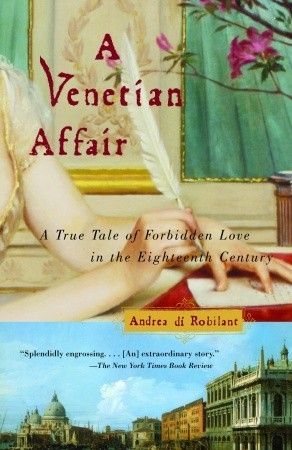
This is one of the juiciest nonfiction books you can imagine, with a premise so incredible that reviewers on Goodreads have labeled it fiction. The author’s father found in his Venetian palazzo a trunk of 18th century love letters, detailing the passionate relationship between Andrea Memmo, a young nobleman, and Giustiniana Wynne, a younger and less noble woman. The book is di Robilant’s effort to tie together the letters that so fascinated his family, with a story that I know see could be described as How I Met Your Ancestor in mid-1700s Venice.
Andrea is a twenty-something romantic who, despite his love of art and sentimentality, is quite an experienced man. Giustiniana is a young, somewhat foreign, girl, who has ambitions beyond marriage. The two of them spend a decade trying to figure out their mixed-up relationship, which involves proposals, engagements to others, separation, secret meetings, and a correspondence that works because Giustiniana addresses Andrea as her “dear brother.” Several of the chapters read very much like the 18th Century Venetian version of How I Met Your Mother plots. Seriously, Casanova turns out to be Giustiniana’s best friend in Paris, and his “cure” for unwanted pregnancy is so ludicrous to our modern ears that not even Barney Stinson would dare to use it as a play. And for those of you who have seen the finale of How I Met Your Mother, the last chapter of this story reads almost the same. Instead of the leisurely pace of the rest of the book, there are summaries of the directions everyone’s lives turned, and the limited personal interaction they had with people who were so important to their raucous social lives in their youth.
5. The Last Dragonslayer, by Jasper Fforde

Jasper Fforde, famous for his Thursday Next series of book-hopping action and word play, started a young adult series a few years ago that I never quite got around to reading. FOOLISH ME. This book was an absolute delight. It’s as zany as you’d expect from a Fforde book, and at a shorter length, more tightly focused than any other Fforde book. Plus the characters are all fun, and the pet Quarkbeast has surpassed Thursday’s pet dodo, Pickwick, as the coolest pet ever.
Jennifer Strange, indentured orphan at Kazam Mystical Arts Management, has her hands full just trying to run company of eccentric magicians without raising suspicions that the owner has disappeared, but premonitions of the death of the last dragon in the land bring her life into chaos as she tries to protect the interests of the dragon, avoid committing treason against King Snood, and prevent a war over the Dragonlands. Oh, and it seems that the death of the dragon could result in a mystical arts management industry change due to wild flux of magic available.
















